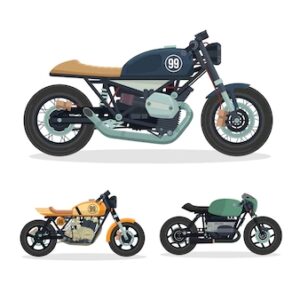Branding Strategies of Leading Brands
What is a brand strategy?
“Brand strategy is a plan for systematic development
of a brand in order to meet business objectives”
The goal of brand strategy is to shape the perceptions of a brand’s audience so that ultimately, we can influence them. These perceptions can be shaped through verbal and visual expressions. A brand strategy was used to be reserved for global brands, but now more business owners have started to realize the importance of building a brand and the strategy behind it. In this blog, let’s examine some of the world’s greatest organizations and reverse engineer their greatness so that you can understand the strategic decisions that they’ve made that allowed them to become the iconic brands that they are today.
Every successful brand strategy must include:
- Purpose
- Vision
- Values
- Positioning
- Personality
- Tagline
So now, let’s see an example of a famous brand for each of these 6 key elements of a brand strategy.
Brand Purpose – Tesla:

Now the goal of the brand’s purpose is to define the greater good behind your work and talk about it in order to rally your team and foster connection with your audience.
Tesla is a great example of a purpose-driven brand. Tesla believes in clean sustainable energy and saving our planet. Tesla’s brand purpose statement is the following:
“To accelerate the world’s transition to sustainable energy”
It ties the brand to a greater cause like saving our planet, helping people or animals. So, to sum up – the brand purpose will inspire your employees to come to work and give your customers a clear reason why they should engage with your brand. So that your brand can play an irreplaceable role in people’s lives.
Brand Vision – Starbucks:

Now the goal of a brand’s vision is to ensure that the brand is navigated in the right direction. A brand’s vision is expressed by your Vision Statement – which is a one-sentence statement describing the clear and inspirational long-term desired end-state. So, you need to describe the future your brand is ultimately working towards. This will inspire and energize your staff and also help you dream big and influence long-term business decisions. Now, this is how Starbucks thinks of the future position as a business they want to be in:
“To be the premier purveyor of the finest coffee in the world”
Starbucks’ vision statement is probably why the multi-million-dollar coffeehouse chain has soared to success. It’s clear that they have an ambitious goal to become the finest coffee maker in the world. If you have a clear vision of where your brand is heading, then you can make meaningful decisions. It helps us think more strategically and make better decisions.
Brand Values – Apple:

Now, the goal of your brand’s core values is to ensure that you can create a culture and driving force for what that brand stands for in the world and how you want that brand to be perceived in the marketplace. So basically, your core values are guiding principles, that express what your brand stands for and they must be actionable so that your staff can act upon them and create that desirable internal culture and ultimately deliver a consistent brand experience externally – to your customers. Steve Jobs used to say:
“Marketing is about values. It’s a complicated and noisy world, and we’re not
going to get a chance to get people to remember much about us”
Apple’s core values are the following:
- Accessibility – Ensure people with physical limitations are not left out.
- Education – Provide educational solutions to schools across the US.
- Environment – Build products that are safe for both users and the environment.
- Inclusion and Diversity – Create products that serve everyone.
- Supplier Responsibility – Hold suppliers responsible for creating quality products for users.
- Privacy – Offer utmost security for the user.
If you’re a founder and you’re not clear about what your brand stands for, then how can you expect others to know? So, to sum up – your core values stand at the very core of your brand and they guide business processes. And together with your purpose and vision statements, they guide your company both internally and externally. They’re important to both – attracting customers as well as retaining your best employees.
Brand Positioning – Amazon:

Now, the goal of a brand’s positioning is to find that differentiator that sets your brand apart from your competitors.
“Positioning is not what you to do to a product; it is what you do the mind of a prospect.”
So you need to find that differentiator to be able to stand out in the marketplace and stand for something in the minds of your customers so that your audience can remember you can for something you want to be known for. Now when you think of Amazon, what comes to your mind?
Probably you love that quick delivery and excellent customer service. So, Amazon’s Positioning Statement is the following:
“For consumers who want to purchase a wide range of products online with quick delivery, Amazon provides a one-stop online shopping site. Amazon sets itself apart from other online retailers with its customer obsession, passion for innovation, and commitment to operational excellence.”
Now, as a business, you can do many different things, but as a brand – you want to be known for just ONE thing – Not one product or one service, but one idea. So that ultimately you can create that desirable perception and take a specific place in the mind of your customer. So next time they’re about to make a purchasing decision, it can help them navigate through a variety of choices and buy from you, thanks to that clear positioning.
Brand Personality – Harley Davidson:

Now, the goal of a brand’s personality is to give a human side to your brand so that your target audience can build a lasting relationship with your brand as if it was a person. It is because certain personalities attract each other, and others repel each other. You should create a human-like persona that will attract your target audience and connect with them on an emotional level. The personality of Harley Davidson is rugged. So, you see a brand you choose is often a vehicle to express yourself. Harley-Davidson has a macho, rebellious, freedom-seeking personality. This personality directs all the visual and verbal communication. So ultimately having a well-defined brand personality will help make that brand-customer connection as if they were interacting with a real human being.
Brand Tagline – Nike:

Now, the goal of a brand’s tagline is to convey the brand’s spirit in the shortest way possible. So basically, you need to distill your message to a selection of a few very concise and memorable words that tell the story of your brand. Your brand tagline should be inspired by your positioning, which is for internal purposes only while your tagline is for external purposes – it is customer-facing. So, in just a few words, youre expected to grab the vibe of your brand. Nike’s positioning is perfectly manifested to the outside world by their renowned tagline – “Just Do It”
It is a brand message that is able to inspire customers to the Nike brand. By featuring numerous notable athletes together with that brand slogan Nike is able to attract customers and create that desirable perception. So, to sum up – we need to basically define what we want our audience to remember us for. Giving them an easy-to-remember tagline is key to helping them remember your brand.
So you see, the world’s most successful companies develop brand strategies that inform everything from product development to customer service to sales, marketing, and beyond. Developing a brand strategy is key to brand building. Good strategy combined with great creativity will give your brand a fighting chance in this cluttered and hyper-competitive world.

